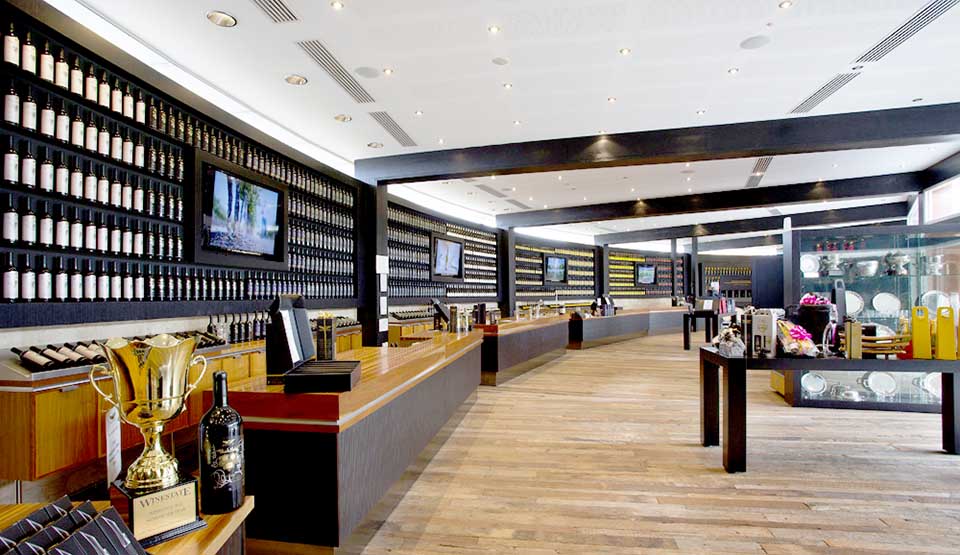
The Wolf Blass company was established in 1969 when the German wine consultant Wolfgang Blass acquired a small site on Bilyara Road in the Barossa Valley. Having discovered that the name Bilyara is the aboriginal word for an Eagle Hawk his choice was made. This huge bird would become the symbol of his winery, which has since become one of the largest wine producers in Australia. Even today, there’s a picture of an Eagle Hawk on every bottle of Wolf Blass wine.
It’s massive thing too. It’s not only the largest bird of prey in Australia but the largest bird of prey anywhere in the world. It has a wing span of over seven feet and it’s about a yard long. The Wedge-Tailed Eagle, the name by which it’s more correctly known has long, fairly broad wings, fully feathered legs and not surprisingly, an unmistakable wedge-shaped tail. And here’s another thing. They are amazing flyers and can soar for hours on end at around six thousand feet and sometimes higher. No one seems to know why they go to all this trouble but perhaps they just enjoy being up there.
Wolf Blass wines have always had a recognizable style. Sourced from many different vineyards in South Australia, the Eaglehawk range are entry-level wines and have proved popular in their home country. Keep in mind that this is the same price as well-known local brands of fruit wine, the only difference being that you are getting “real” wine and therefore a far more interesting product.
Wine-Now Asia and LIQ9.Asia are the first complete Thailand online Wine and Liquor store with an extensive selection of products. The company website provides a full range of really useful information and tasting notes. The products encompass everyday wines at decent prices and top-quality classics that you might need for a special occasion. Ordering is fairly effortless too. However, to obtain these two Wolf Blass wines at the price shown, you’ll need to buy a minimum of three bottles. If you merely want to give them a try, they’re sometimes seen at the local Big C or Lotus’s outlets.
Wolf Blass Eaglehawk Chardonnay (white), Australia (Bt. 399 @ Wine-Now Asia)
This rich, bright golden wine looks quite stunning in the glass. I expected the aromas to really hit my nose but no, this is a lovely refined smell. If you give it a bit of time to develop, you’ll be rewarded with delicate reminders of citrus, melon, peach and fresh white flowers. Exactly what flowers I am afraid I have no idea. I am not too good on flowers, unlike my mother who could spot a Chrysosplenium alternifolium at three hundred yards. Anyway, the mouth-feel of this wine is soft and silky with a lovely light, creamy texture that often comes with a good Chardonnay (SHAH-dun-ay). There’s just the faintest touch of acidity which enhances the flavour and gives the wine a sense of firmness, but the chances are that you might miss the acidity altogether. Incidentally, if the mention of “acidity” evokes distant memories of steaming test-tubes in the chemistry lab, fear not, because most fruit and nearly all foods and drinks contain some acidity, even strawberry jam, milk products and cornflakes.
 With an ABV of 13.5%, there’s plenty of rich white fruit on the palate and just a hint of oak but what I like about this wine is that the makers have not let the fruit get over the top. There’s a very long peach and citrus finish too. If you prefer your Chardonnays with a bit of character, give this one a try. The makers suggest that you could pair the wine with chicken, creamy pasta sauces, seafood, veal and quail. They also suggest poached chicken and avocado salad, or a pumpkin and bacon risotto. It would also make a pleasant aperitif but don’t forget to drink it pretty cold. I’d be quite happy to drink this all evening and so it seems, would the dogs. But that’s not going to happen, because they’re having beef chunks for dinner and Cabernet Sauvignon will be more appropriate.
With an ABV of 13.5%, there’s plenty of rich white fruit on the palate and just a hint of oak but what I like about this wine is that the makers have not let the fruit get over the top. There’s a very long peach and citrus finish too. If you prefer your Chardonnays with a bit of character, give this one a try. The makers suggest that you could pair the wine with chicken, creamy pasta sauces, seafood, veal and quail. They also suggest poached chicken and avocado salad, or a pumpkin and bacon risotto. It would also make a pleasant aperitif but don’t forget to drink it pretty cold. I’d be quite happy to drink this all evening and so it seems, would the dogs. But that’s not going to happen, because they’re having beef chunks for dinner and Cabernet Sauvignon will be more appropriate.
Wolf Blass Eaglehawk Merlot (red), Australia (Bt. 399 @ Wine-Now Asia)
This Merlot (MEHR-loh) is a soft and easy-drinker. The vibrant dark wine has a sweetly seductive aroma of dark plum, ripe black cherries, a hint of spice and fresh herbs in the background. It may be an entry-level wine, but it certainly doesn’t smell like one. It doesn’t taste like one either, because there’s a lovely soft and full mouth-feel with plenty of sweet fruit on the palate. You’ll probably pick up reminders of plum, cherry and a dash of spice. There’s some vanilla too and an attractive zingy touch of acidity which perks up the flavour. As you’d expect, the wine has a long, smooth and fruity finish. At 13.5% ABV, it’s pleasantly full-bodied and dry, and the makers suggest that it would be ideal with turkey, duck or pasta. Merlot tends to go well with a wide range of foods so don’t be afraid to experiment. You could try it with roast Eagle Hawk, but I doubt whether you’ll find one.
And talking of which, I read this morning that Eagle Hawks have a reputation for viciously attacking hang-gliders. If you happen to engage in this activity, steer well clear of Eagle Hawk country or you might return to ground level more rapidly and less elegantly than intended.
 |
 |
 |





